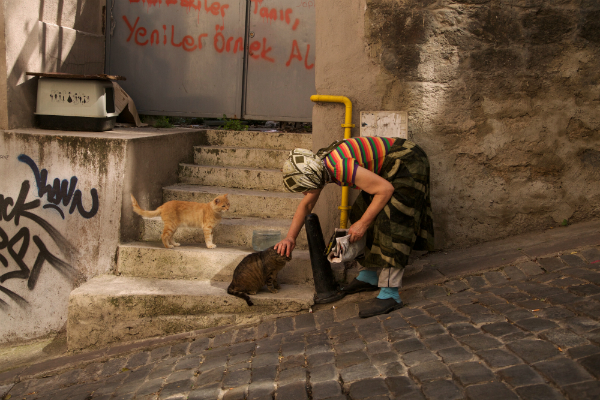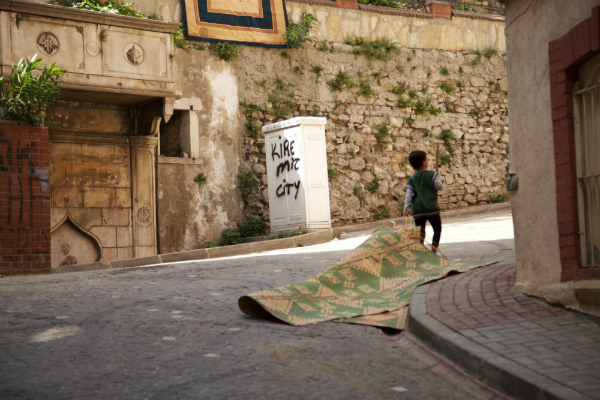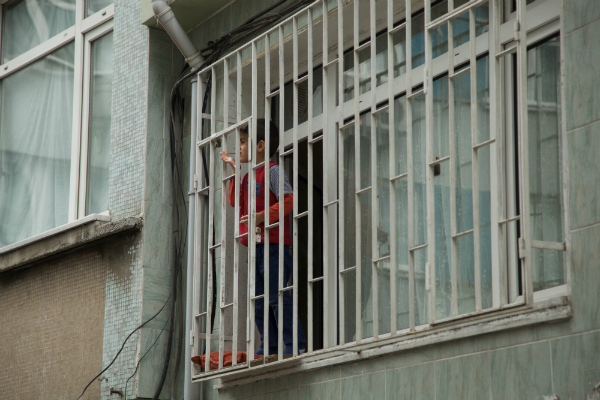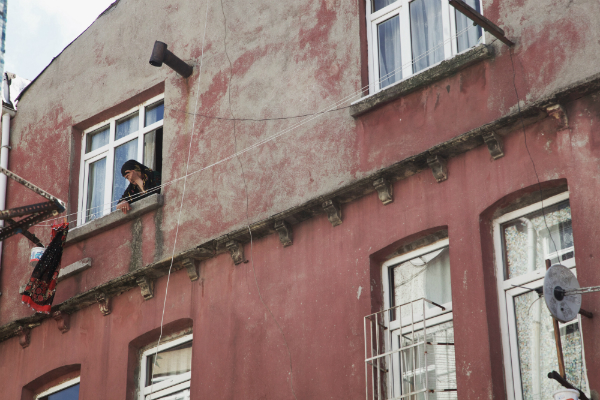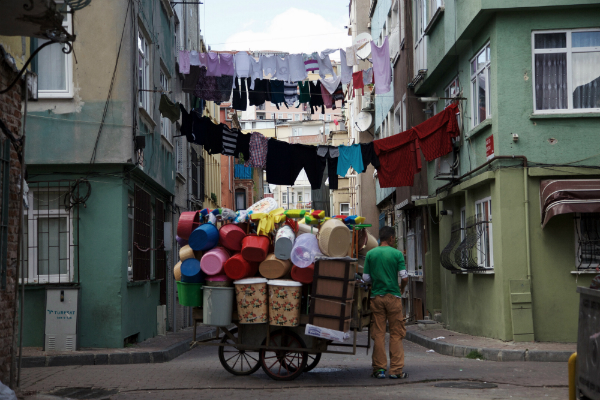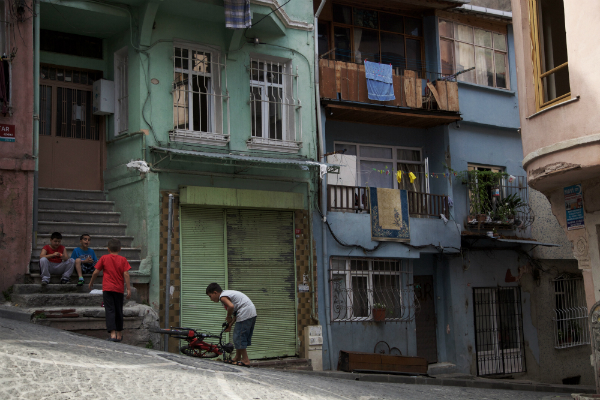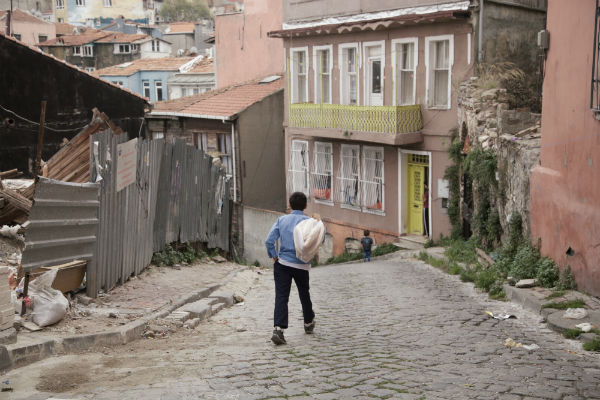There is an Istanbul that is unknown to many visitors; it lives beyond the chaos of Sultanahmet and Beyoğlu, hiding in suburban streets and neighbourhood alleyways. Navigating your way through these distant areas can result in spontaneous and organic photography, as long as you remain receptive to the intimate moments that locals share between one another. It begins as as soon as you leave Istiklal. An alternative to the speciality coffee shops and tourist salesmen of the walk to Galata Tower can be found by heading downhill from the Sişhane metro on Istiklal. Families, friends and storekeepers sit around their doorways, waiting by their window sills for their baskets to be filled as they watch the children run up and down the sloping streets. These moments are untouched by the hectic noise that lies just beyond.
If you’re craving more neighbourhood quietude, it is recommended to visit Balat, historically a Jewish and Armenian quarter. Texturally rich and visually authentic, it is an old district of faith and, more recently, of design. Modern vibrant colours now present themselves alongside fading Ottoman facades, with art galleries, design boutiques and antique stores continuing to appear, drawing students and creative types. Making your way to Balat is not difficult, only a short distance from Eminönü and a bus ride from Taksim. Strolling across the Golden Horn, past Unkapani and along the water is an enjoyable walk. Observe the fishermen enjoying some downtime with their boats at anchor.
Before entering Balat, you can wander through Fener, which has a similarly authentic vibe. Streams of laundry dry above winding streets, as women hang out their clothes or chat to their neighbour across the line. In saying this, the light reflects in a certain manner from these buildings in slim alleyways, so keep focused. Once in Balat, take your time to wander slowly and you will notice the architectural influence of the Jewish, Greek and Armenian people that once occupied the area. One-hundred-year-old Ottoman houses remain in the district and are being restored with the help of the European Union, along with historic churches-turned-museums (Chora church), and synagogues.
Perhaps the most hyped street is Hızır Çavus Caddesi. The colourful buildings and street carriages selling goods combine to highly photogenic effect. For fresh produce and the main market atmosphere, walk along Leblebiciler Sokak and make a turn through Vodina Caddesi, a long stretch of road with men standing outside their antique shops waiting for curious passers-by. If you turn into nearby streets, children will dart in and out, riding their bikes or just trying to grab your attention. A note of caution: the locals in Balat are not afraid to communicate, so maybe don’t parade your Canon around too often: the artistic crowd is well known to them.
For me personally, one of the most interesting aspects of Balat is its collective community basis. As you continue uphill and swerve around the various streets, this factor becomes more and more obvious. Groups of families sit across from each other on the roads, sharing stories, exchanging food and running into one-another’s houses. The children seem to find any means necessary to amuse themselves, keeping their outdoor creativity alive. You will notice many of them sitting or standing outside their barricaded windows, smiling and tagging along as you walk by. These moments can be lively or still, and are always raw.








